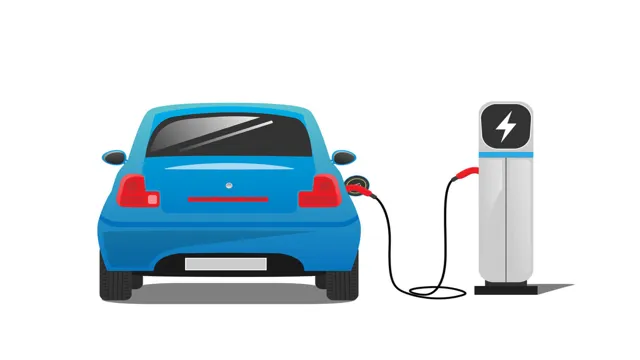Are you curious about electric vehicle (EV) motors? If so, you’re in the right place! EV motors are an integral part of electric cars and other electric vehicles and are the driving force behind their efficient, eco-friendly operation. In this blog post, we’ll take a look at what an EV motor is, how it works, and why it’s such an important part of electric vehicle technology.
So, let’s dive in and explore the world of EV motors and their role in the fascinating world of electric vehicles.
How does an EV Motor Work?
Electric vehicles (EVs) are becoming increasingly popular as an eco-friendly, cost-efficient form of transportation. But how does an EV motor work, and how does it differ from traditional gasoline-powered vehicles? An EV motor is an electric motor that produces torque and rotation to power an electric vehicle. The motor is powered by energy stored in the vehicle’s battery and is controlled by a controller.
The motor converts the energy stored in the battery into mechanical energy, which is used to propel the vehicle. The controller is the brain of the system, controlling the flow of electricity from the battery to the motor. It acts like a switch, allowing the driver to select different levels of acceleration, deceleration, and speed.
The controller also monitors the battery’s charge and can shut off the motor if the charge gets too low. Unlike a gasoline-powered engine, an EV motor is more efficient and produces fewer emissions. It also has fewer moving parts, which means it’s less likely to break down or require costly repairs.
In addition, an EV motor runs quietly, making it a great choice for city or suburban driving. The main difference between a gasoline engine and an EV motor is that the former relies on an internal combustion process while the latter uses an electric motor. A gasoline engine burns fuel to create energy, which is then used to power the vehicle.
An electric motor, on the other hand, converts electrical energy from the battery into mechanical energy, which is then used to spin the wheels. EVs are quickly becoming a popular choice for city and suburban drivers. Thanks to their efficiency, low emissions, and dependability, more and more people are choosing to switch to an electric vehicle.
So if you’re curious about how an EV motor works, it’s worth exploring the technology behind these cutting-edge vehicles.
The Components of an EV Motor
An electric vehicle (EV) motor is a key component of any EV, and understanding how it works is essential for keeping your vehicle running smoothly. The EV motor is responsible for powering the vehicle and consists of several moving parts that work together to convert electrical energy into mechanical energy. This mechanical energy is then used to propel the vehicle forward.
The EV motor is powered by electricity, which is typically supplied through a battery system or a fuel cell. The motor is controlled by a motor controller, which is responsible for regulating the speed and torque of the motor. The components of an EV motor include an electric motor, motor controller, battery pack, power cables, and a power inverter.
Together, these components work to convert electrical energy into mechanical energy, which is used to power the vehicle. Understanding how an EV motor works can help you maintain and troubleshoot your vehicle’s motor system.

The Benefits of an EV Motor
Electric vehicles (EVs) are becoming increasingly popular due to their many benefits, including environmental, economic, and convenience advantages. But what makes an EV motor work? To put it simply, an EV motor converts electrical energy from the battery into mechanical energy that powers the vehicle’s wheels. This is made possible by a series of magnets, electric current, and a rotor.
Magnets and electric current create an electromagnetic force that rotates the rotor, which is connected to the transmission. This rotation is what turns the wheels, propelling the vehicle forward!
Common Problems with EV Motors
Electric vehicles are quickly becoming a popular form of transportation, but there are a few common problems that can arise with EV motors. It is important to understand how an EV motor works in order to troubleshoot any issues that may arise. An EV motor is essentially an electric motor that is powered by electricity stored in a battery.
This electricity is then used to turn the motor shaft, which is connected to the wheels of the vehicle. The motor shaft is connected to a controller, which controls the speed and torque of the motor. The controller also controls how much electricity is used to power the motor.
The most common problem with an EV motor is a dead battery. This can happen due to a variety of reasons, such as leaving the car idle for too long or a bad connection between the battery and the motor. In this case, the motor will not receive the necessary power to turn the shaft.
This can be solved by replacing the battery or troubleshooting the connection. Another common problem is an overheating motor. This is caused when the motor is used for too long or too often, resulting in the motor becoming too hot.
To fix this problem, the motor must be cooled off, and the amount of time it is used must be reduced. Finally, an EV motor can suffer from electrical issues due to a faulty connection. This can be caused by a damaged wire or connector, which will need to be replaced.
Additionally, if the motor is not receiving the right amount of power or voltage, this can also be a cause for concern. Understanding how an EV motor works and being aware of these common problems can help you troubleshoot any issues that may arise. With proper maintenance, an EV motor can provide a reliable form of transportation for years to come.
Malfunctioning Batteries
Batteries are essential components in electric vehicles (EVs). Without them, an EV motor would be unable to power the vehicle. But what exactly is an EV motor, and how does it work? The answer to this question lies in understanding the different components and processes that make up the EV motor.
The motor itself is a device that converts electrical energy into mechanical energy, allowing the vehicle to move. Inside the motor, the electric current is generated by the battery and then passed through a series of magnets, which produce a magnetic field. This magnetic field is then used to rotate a rotor around an axle, which produces a rotational force that turns the wheels of the vehicle.
All of this happens in a matter of seconds, allowing the vehicle to travel at high speeds.
Shortened Lifespans
Electric vehicle (EV) motors are a vital component of any electric vehicle. These motors work by converting electrical energy into mechanical energy, allowing the EV to move. The motor consists of a stator, which is a stationary part of the motor, and a rotor, which rotates due to the interaction between the stator and the electric current.
The stator comprises wire coils that are wound around an iron core, while the rotor consists of permanent magnets or electromagnets. When the current passes through the stator coils, a magnetic field is created, which interacts with the rotor magnets, causing the rotor to spin. The spinning rotor then creates torque, which is transmitted to the axle of the vehicle, allowing it to move forward.
In this way, EV motors are able to efficiently convert electrical energy into the mechanical energy needed to power the vehicle.

High Maintenance Costs
Understanding how an EV motor works can help us better understand why electric vehicle maintenance costs can be so high. An electric vehicle (EV) motor is a type of motor that uses electricity as its power source instead of fuel. It consists of a motor, a controller, and a battery pack.
The motor is the main component that turns the wheels of an electric vehicle, while the controller is the part that regulates the power from the battery to the motor. The battery pack is the storage of energy that powers the motor. All of these components need to be regularly maintained to ensure that the EV runs efficiently and safely.
This can include checking for any worn parts, replacing batteries and controllers, and making sure all the connections are secure. Keeping up with regular maintenance can help prevent costly repairs and breakdowns in the future.
Types of electric vehicle motors:
There are two main types of electric vehicle motors:
- Induction motors: Induction motors are the most common type of electric vehicle motor. They are simple, reliable, and efficient.
- Synchronous motors: Synchronous motors are more complex and expensive than induction motors, but they offer better performance and control.
Advantages of electric vehicle motors:
- Electric vehicle motors are very efficient, which means that they can convert more electrical energy into mechanical energy than internal combustion engines.
- Electric vehicle motors are very quiet, which makes for a more pleasant driving experience.
- Electric vehicle motors have instant torque, which means that they can accelerate very quickly.
Disadvantages of electric vehicle motors:
- Electric vehicle motors are more expensive than internal combustion engines.
- Electric vehicle motors require a battery pack to store electricity, which can be expensive and heavy.
Conclusion
Electric vehicle (EV) motors play a crucial role in the operation of electric vehicles. They convert electrical energy from the battery into mechanical energy that powers the vehicle’s wheels. This efficient and eco-friendly technology has many benefits, including low emissions, decreased maintenance costs, and quiet operation.
Frequently Asked Questions [FAQs]
1. How does an EV motor work?
An electric vehicle (EV) motor works by converting electrical energy into mechanical energy to power a vehicle. The motor is powered by a battery or fuel cell, which stores electrical energy in the form of chemical energy. The motor then converts this energy into mechanical energy through the use of magnets and an electromagnet. This mechanical energy is then used to turn the wheels of the vehicle.
2. What are the components of an EV motor?
An EV motor consists of an electric motor, a controller, a battery, and a fuel cell. The motor is the device that converts electrical energy into mechanical energy. The controller is the device that controls the power output of the motor. The battery or fuel cell is the device that stores the electrical energy.
3. How efficient is an EV motor?
The efficiency of an EV motor depends on several factors, including the size of the motor, the type of battery or fuel cell being used, and the efficiency of the controller. Generally, EV motors are more efficient than traditional gasoline engines.
4. What is regenerative braking in an EV motor?
Regenerative braking is a process in which the energy generated from the motor when it slows down is used to recharge the battery. This helps to extend the range of the vehicle and reduce the amount of energy used in traditional braking.
5. How do you maintain an EV motor?
Maintaining an EV motor is relatively easy. Regular checks and maintenance should be done on the motor, the battery or fuel cell, and the controller to ensure that the motor is operating at optimal efficiency. Additionally, the battery should be charged regularly to maintain its maximum capacity.
6. What safety precautions should be taken when using an EV motor?
It is important to make sure that the EV motor is properly installed and that all safety precautions are followed when using it. Additionally, the battery should be properly charged, and the motor should be regularly inspected to ensure that it is functioning correctly.

I am James Beaupre, the founder of batteryvehicleprice.com. With a deep-rooted passion for vehicle batteries, I have dedicated my career to exploring and understanding the intricacies of this crucial technology. My website aims to provide valuable insights and information on battery-powered vehicles, empowering individuals to make informed decisions.
